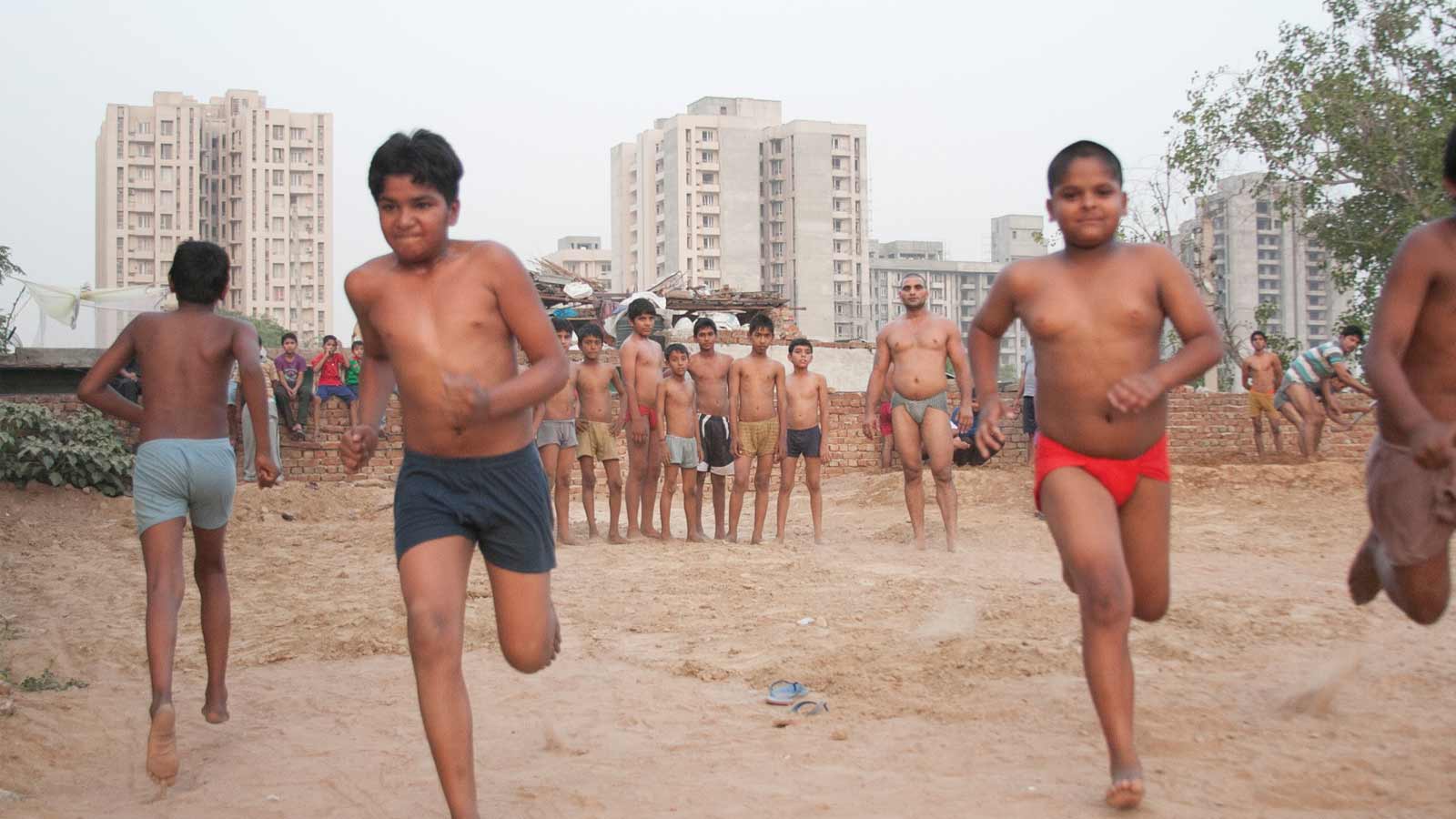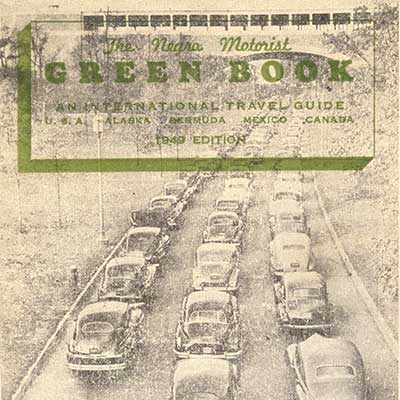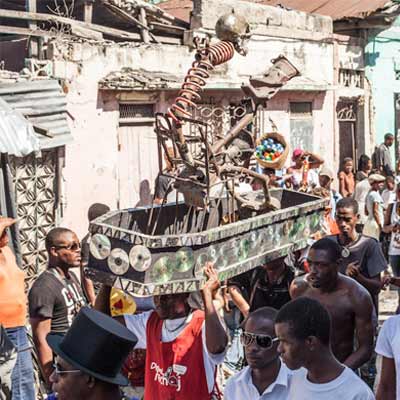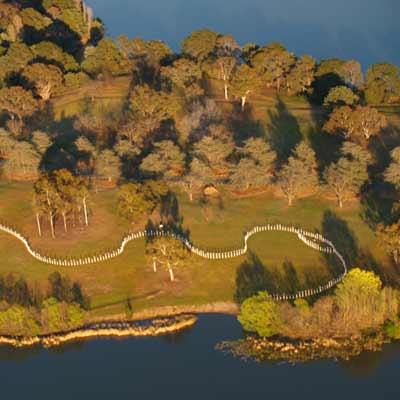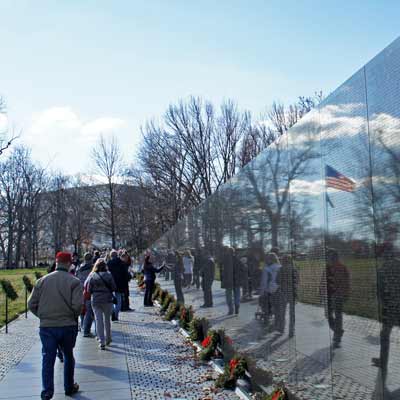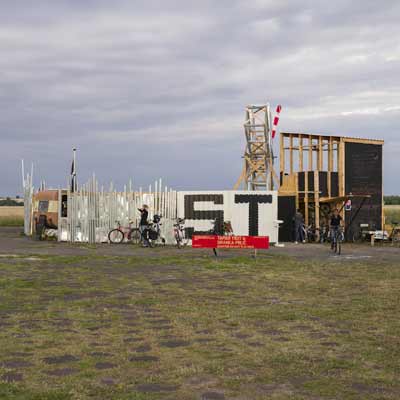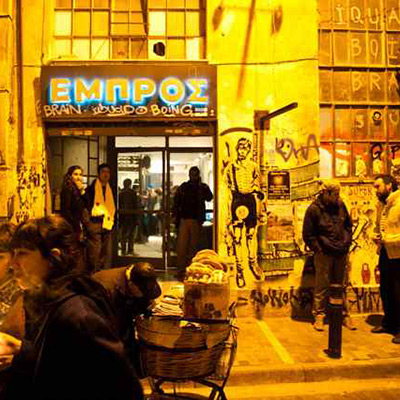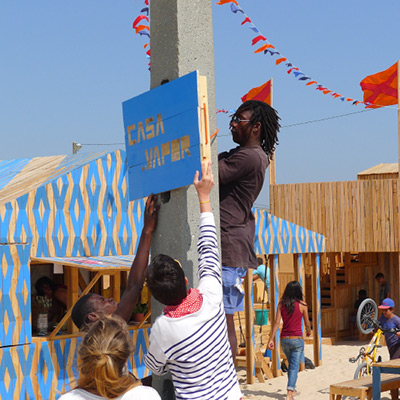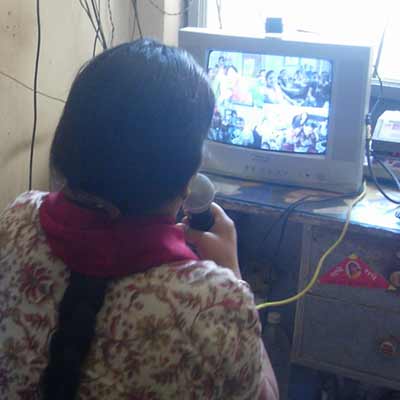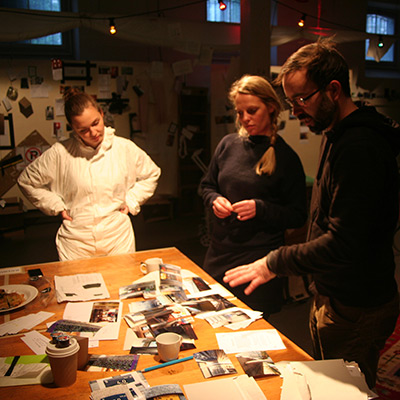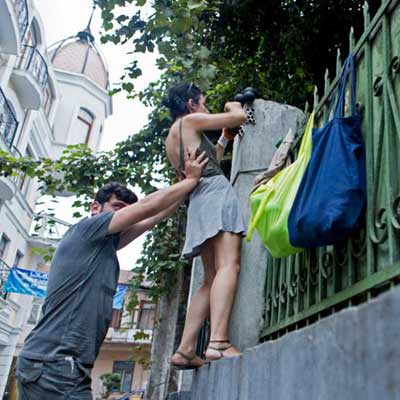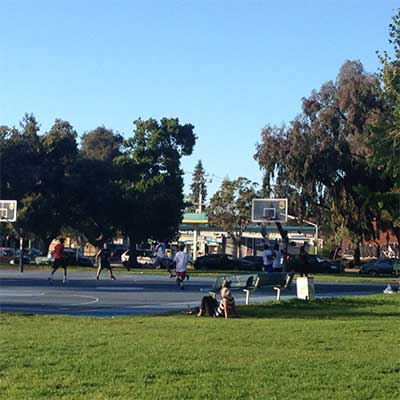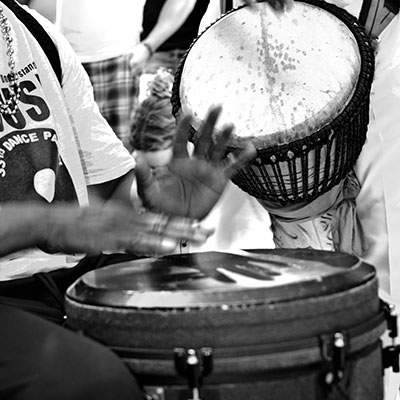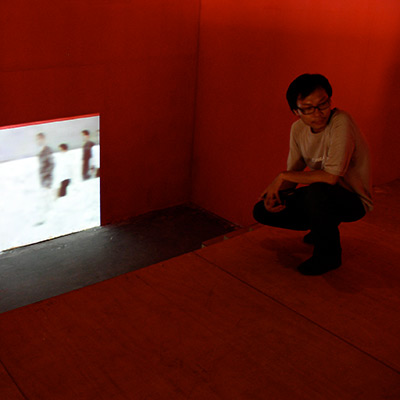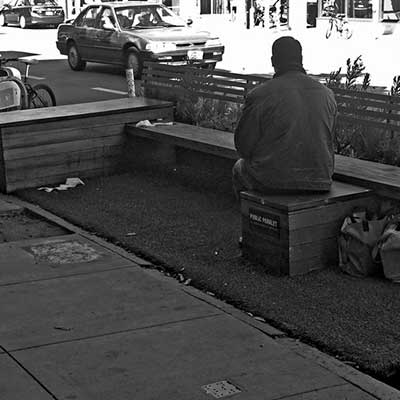As part of a grant from the Khoj International Artist’s Association, in the summer of 2013, we, Alex, Namrata and Soaib*, three artist-practitioners, facilitated a community art project in Tigra, an ‘urban village’ of the city of Gurgaon, in India. Over a month and a half, we worked with village residents to collectively reimagine the nature and use of public space here. This photo essay presents the participatory tools and processes that led to creating an akhada, a traditional wrestling ground, in Tigra.
*Alex White Mazzarella, Namrata Mehta and Soaib Grewal work as an interdisciplinary team with a range of experience in urban design, research and social art practices. Namrata and Soaib have consistently engaged with everyday Gurgaon life in their practice, while Alex brings to this collaboration his experience in community-based art practices in India and other parts of the world. Their work in Tigra was supported by the Khoj International Artists’ Association’s, “Negotiating Routes: Ecologies of the Byways” project. A publication based on this work was released earlier this year and is available at https://gurgaonecology.wordpress.com/.
Located 32 kilometers west of New Delhi, Gurgaon is the biggest hub of outsourcing companies in the world. In just 25 years, Gurgaon has grown from a cluster of villages to a ‘Millennium City’ of over 1.5 million people. This period of accelerated growth was driven by the private real estate sector, with landowners selling vast tracts of their agricultural land to builders of commercial and residential complexes. Today, the landscape of Gurgaon is a complex mix of state-of-the-art business parks, shopping malls, golf courses and gated residential complexes, with several old village settlements in the midst of these new constructions.
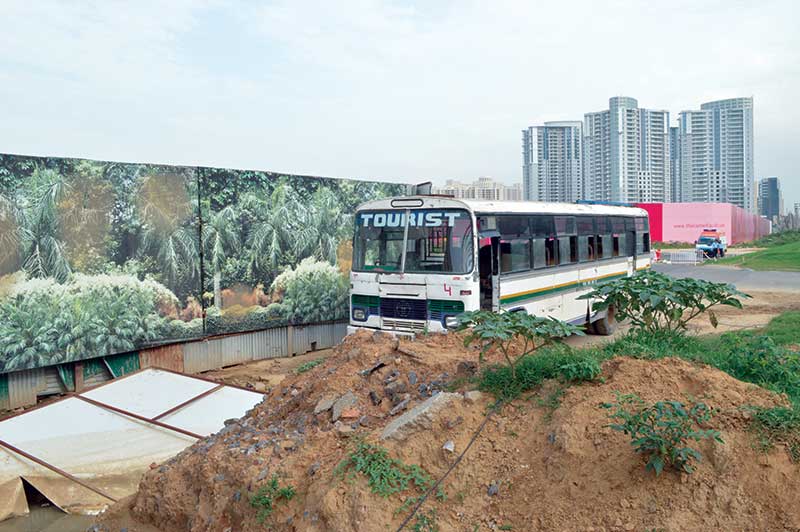
The Gurgaon model of development is being replicated in new urban spaces across the country. However, the Millennium City’s viability, beyond its short-term boom, is already being questioned--specifically its environmental, social and cultural sustainability. While Gurgaon attracts white-collar workers from across the country to the many Fortune 500 companies based here, the city also has a large share of rural migrant labor, employed in lower-level, service sector jobs. Friction between these increasingly disparate socio-economic classes is becoming more evident, and is perpetuated in the exclusivity of urban space and privatisation of land. Common space is needed to help create and establish a collective social life and include diverse Gurgaon residents as active citizens.
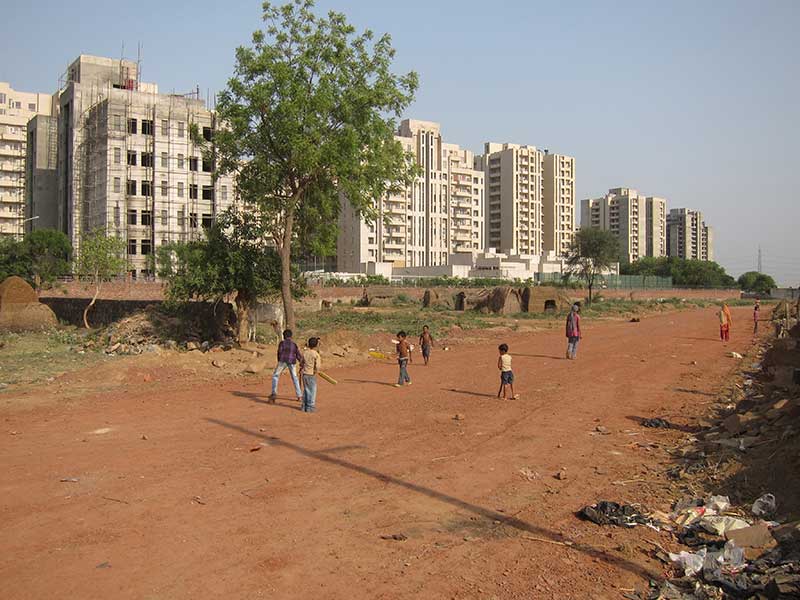
In Tigra, agricultural land belonging to its residents was acquired by the government or sold to private developers nearly twenty years ago. Even though Tigra is today an ‘urban village,’ many families continue to maintain rural livelihoods, farming on land, now several miles away, or herding cattle for their milk. Tigra’s population also consist of rural migrants from across North India, who work in Gurgaon’s high rises, and rent tenement rooms from Tigra’s landowning residents.
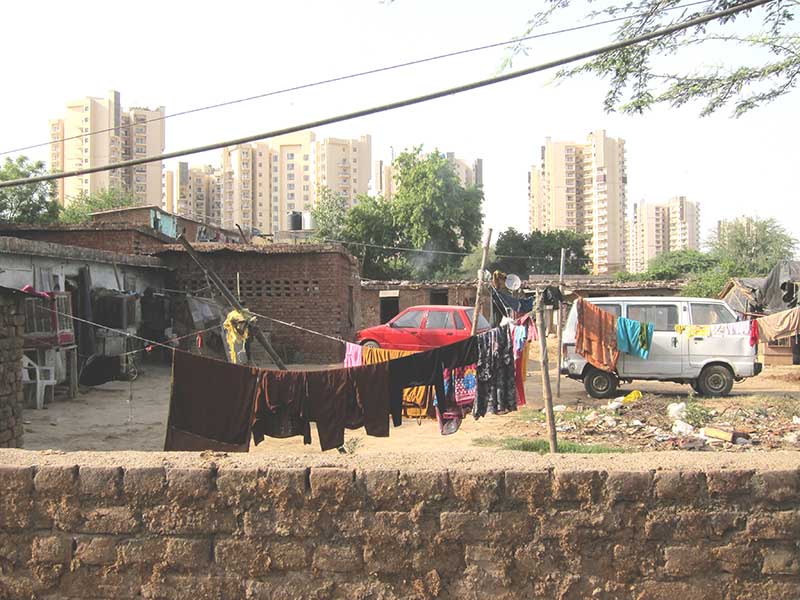
Our activities focused on Tigra’s Baba Ram Mohan Johar (lake). Believed to be sacred for its water, the seasonal lake is located at the center of the village. The lake has dried up as a result of the deterioration of monsoon rainwater channels, and the subsequent drop in groundwater levels in the surrounding areas. Some areas of the lake-bed have been reclaimed as land for the construction of a community center, (which as of the year 2013, had been under construction for three years, and had yet to be used.) The incumbent Ward Councillor, of the newly formed local governmental body, Municipal Corporation of Gurgaon (MCG), proposes to build a boundary wall along the circumference of the lake to secure it from further encroachment. Having just barely defeated Tigra’s candidate by three votes, her proposal has a bleak future. It is especially opposed by a group of three village elders, self-appointed as the Village Development Committee.
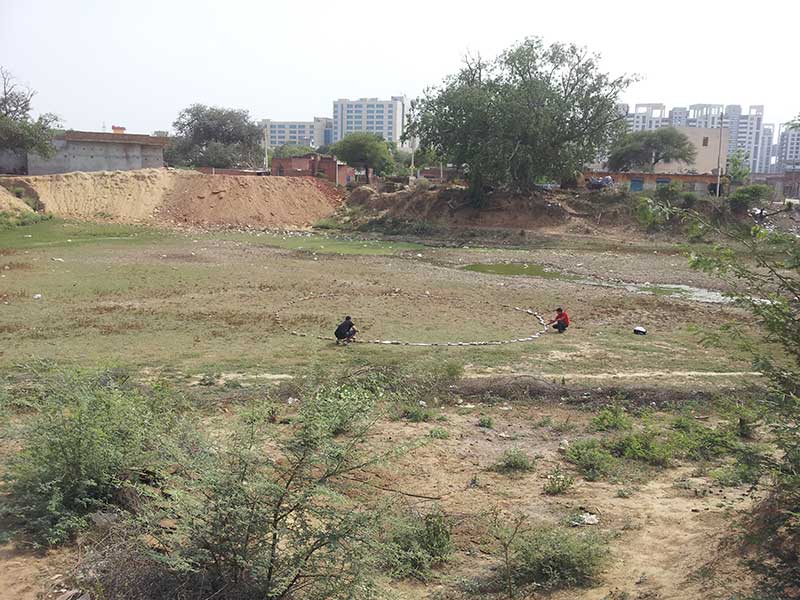
Our discussions with residents revealed various opinions for future uses of the lake bed: some believed what was left of the lake should be used as grazing land for cattle; others held that it should be converted into a park for children; some imagined an old-age home on it; others believed it should be restored as a seasonal water source; and still others wanted to see it as a parking lot for the community center. Villagers also offered stories about the lake’s history going back seven generations. They discussed its sacredness to believers and its use as a playground by children. One woman mentioned how the lake was perhaps punishing the village for its degradation: “The lake, the house of God, was beautiful, but now it is doomed. Not because of the water but because of this wayward world and its bad deeds. The village cannot find happiness”.
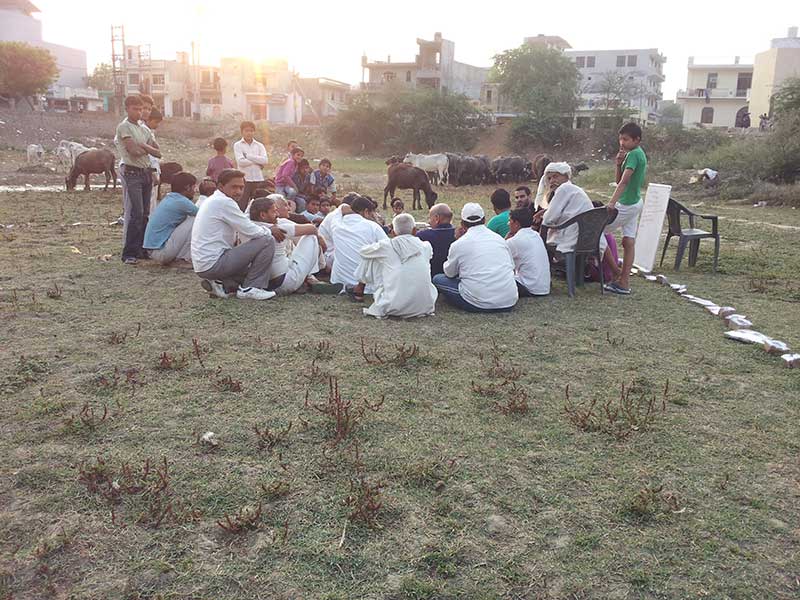
On Sunday, May 5th, 2013, we invited village residents to the community center for a dialogue about public space. The day-long activities included a video screening (a film of Tigra residents’ recollections of the Baba Ram Mohan Johar), an installation, a viewing of public art, and a dialogue on imagining the future of the lake. Invitations were printed out and hand-delivered, door-to-door, the day before.
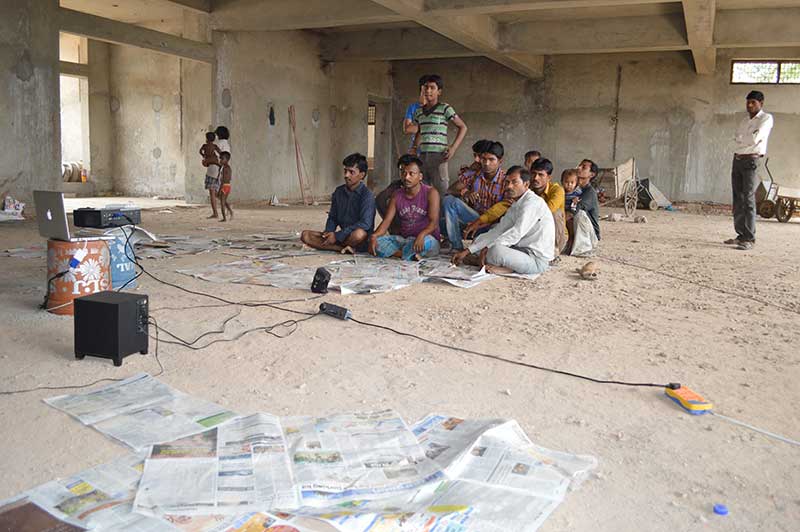
A provocative question about land ownership—framed as a play on words—was painted on large pieces of paper and placed in the lake bed for Tigra residents’ interpretation. The words ‘zameendari’ and ‘zimmedari,’ translate roughly to ‘land ownership’ and ‘responsibility’ in Hindi, and present an open-ended exploration of civic values in Gurgaon--a city that is increasingly facing water, land management and ecological challenges. A series of land artworks also occupied the lake bed: the figure of a cow, to indicate the lake’s role as a grazing ground and bathing area for dairy cows and buffalos (owned by 60 per cent of the village); the ancient and auspicious Hindu symbol of the swastika–representing the lake as a holy place for pilgrimage; and a rain cloud– representative of the reservoir’s role in collecting monsoon rainwater.
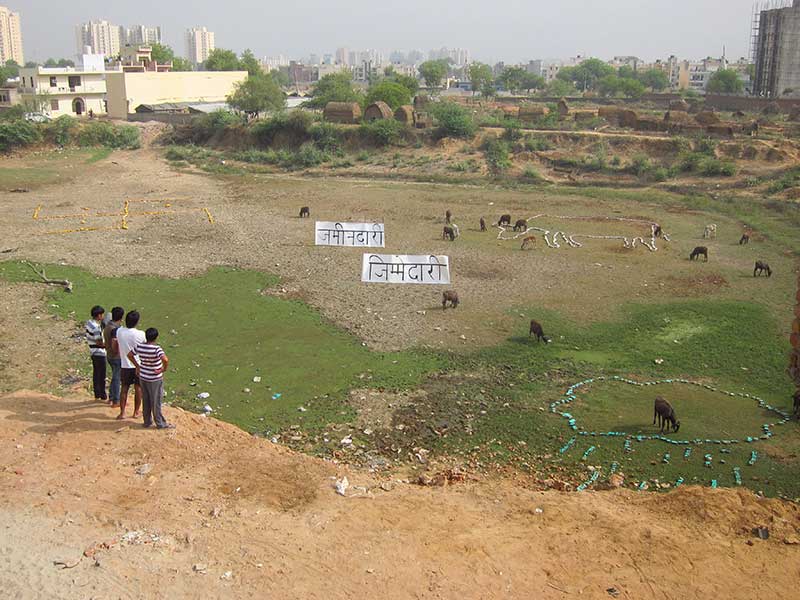
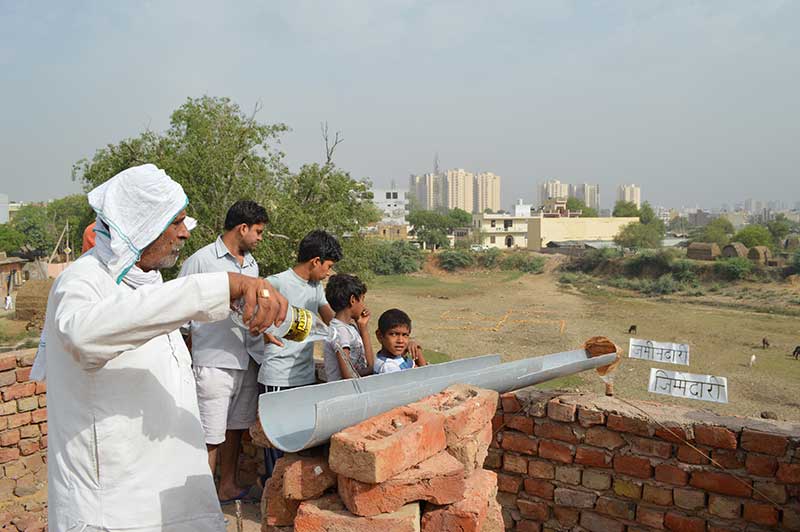
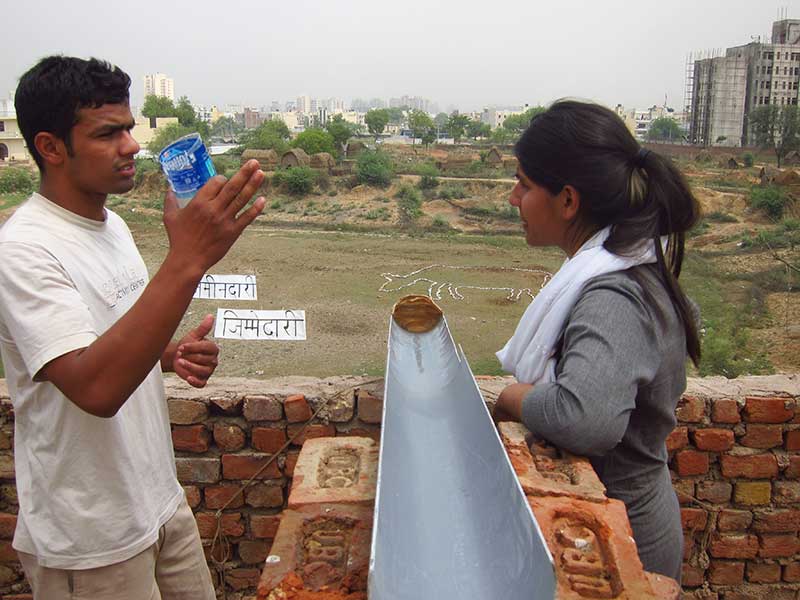
In the evening, a second projection of the film featuring resident recollections of the Baba Ram Mohan Johar (lake) took place at a centrally-located street corner, to which the Village Development Committee were especially invited (they attended the event). An open forum to discuss and critique the various views that were presented in the film followed the screening. During this conversation, Deepak and a group of young adults presented an idea they had been discussing for the community space: to build an akhada, or a traditional wrestling arena. Haryana, the state in which Tigra village is located, is known for its tradition of pehlwani (wrestling). The young men decided to self-organize to bring an akhada to the community.
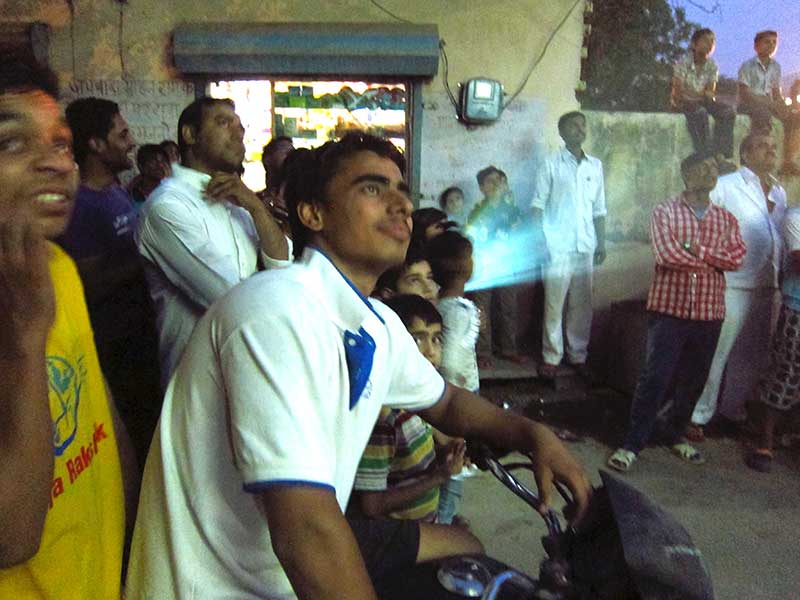
An akhada is a gymnasium or wrestling arena, central to the social fabric of martial communities in northern India. While the form is physical, it also embodies a deeper spiritual aspect. Each day, a mound of earth is dampened with water and dug up to displace the tough topsoil. This work is performed religiously with fixed rites, one elder passing the shovel to the next. The space embodies collectivism in usage and custodianship, and both the space and activity are inclusive; within the wrestling circle all are equal and the practitioners don't observe caste distinctions. The camaraderie here is palpable and helps in promoting the neutrality of the space in an otherwise politically divided environment. According to Deepak, “A truckload of dirt, a bag of almonds and an image of Lord Hanuman is all you need to build an akhada”.
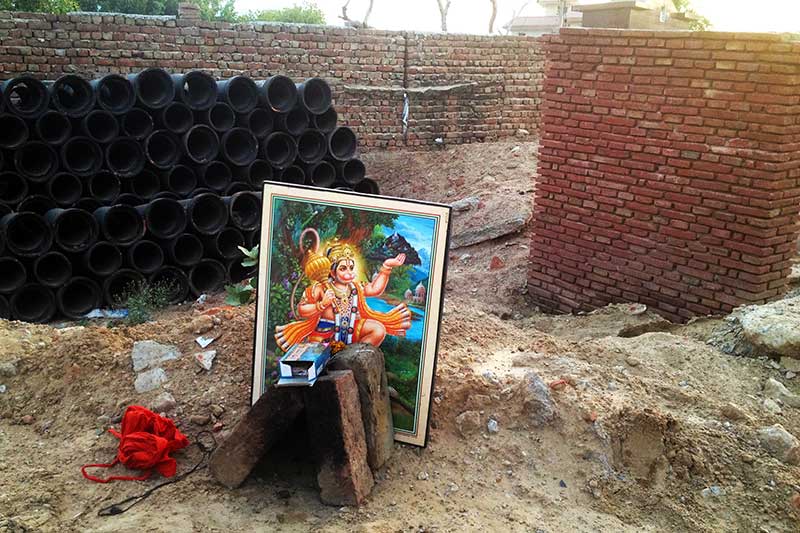
Tigra’s akhada was opened with only the basic infrastructure required to begin a wrestling practice. It will be formalized over time, with the community contributing to its development. The akhada is a structure that requires very little initial financial investment, and allows for the easy testing of new design ideas. In this incremental approach, each new design element is added out of necessity. Here, users of the space are its designers, and must negotiate their different visions. Since the akhada is made by the people who use it, community investment is central to its sustenance. The sense of collective ownership and work in the akhada builds intimacy between people and the space.
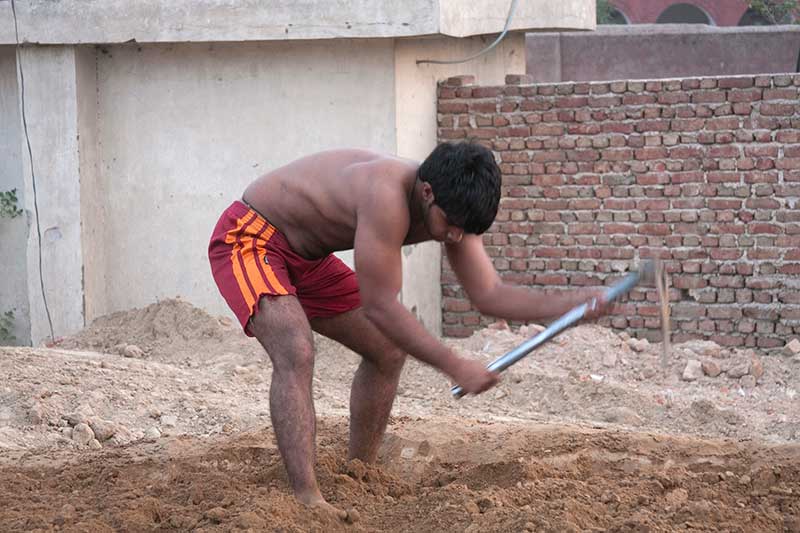
At it’s core, the akhada is a form of community-driven urban design and planning, Although pehlwani (wrestling), and other similar sports, such as boxing, have been traditionally male dominated sports, there is a strong and growing space for women to participate and excel in them. The village of Bhiwani, also in Haryana, is for example a popular training ground for Haryanvi women boxers, and many families from villages across the state send their daughters to Bhiwani to train competitively.
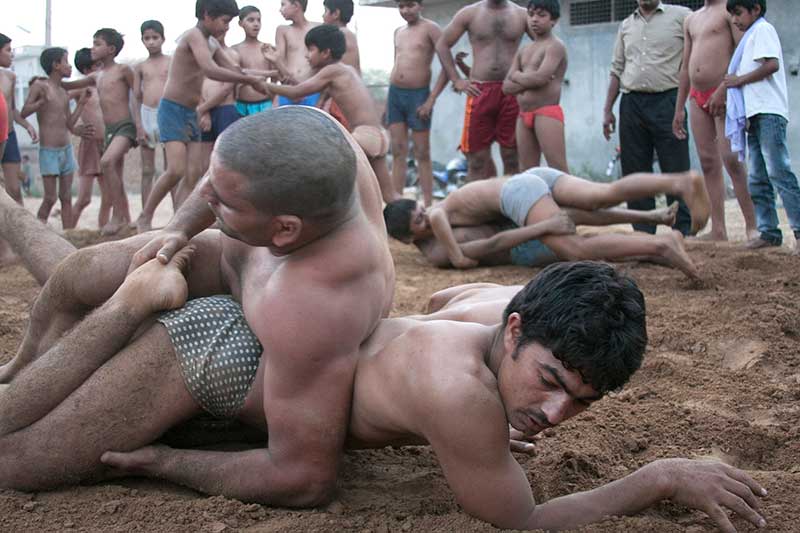
We came in to Tigra, intent on questioning existing power structures that limit imagination and activation of public space here—age, caste, landownership and gender. The result of our work was that a group of Tigra’s young men organized to build the temporary akhada. The akhada is a space that is familiarly associated with inclusivity, though perhaps limited, in this case, to caste identities and land ownership, not gender. Given that the akhada was built in the public space of the community center, a sphere of Tigra village life that observably excludes women, and also that our dialogues were largely with men, both young and old, this outcome isn’t surprising. What emerged was an understanding that any instance of community art or social practice, in this case, the akhada, is also a wrestling space for the articulation of existent and potential or emergent community relations.
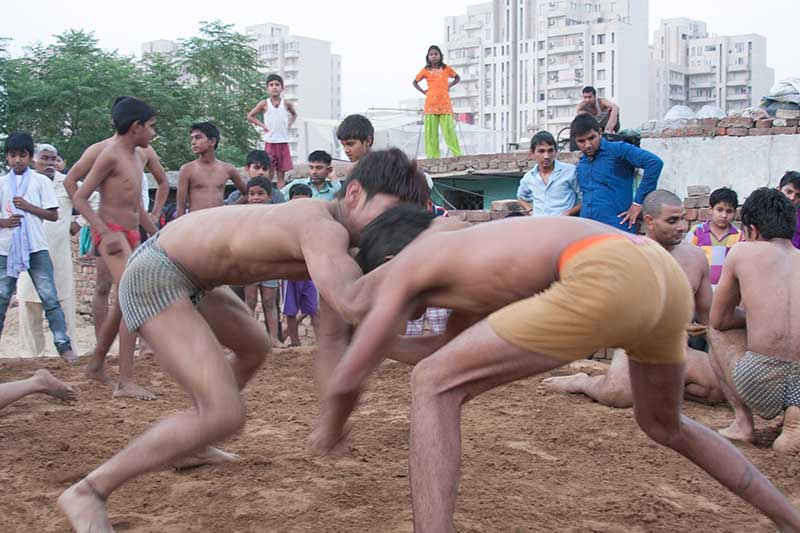
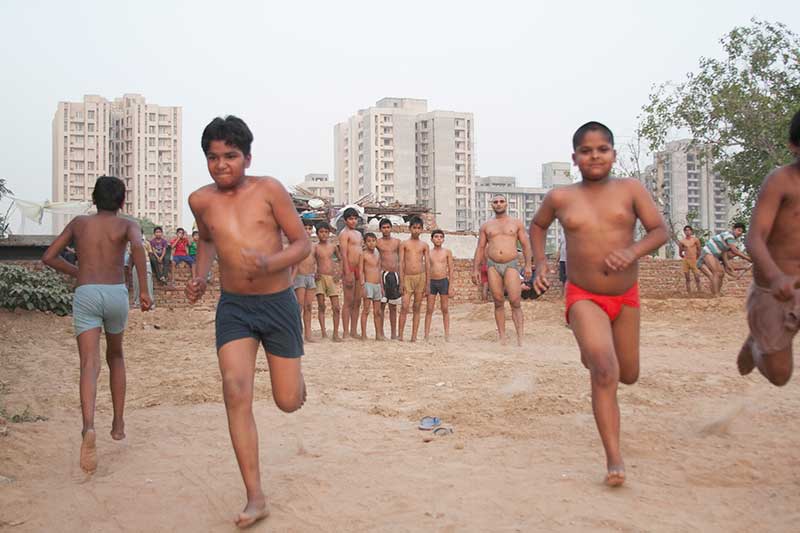
Author Bio
Alex White-Mazzarella is a multi disciplinary artist, urban planner & facilitator who founded Artefacting as a socio-cultural practice that creates public art and initiatives from within communities to build capacity, cooperation and knowledge. With courage, multiculturalism and global insight in hand, Alex is passionate about bringing diverse audiences together to unlock people’s potential to learn grow and build with and through one another. He is also a painter with artwork in private collections throughout the world.
Namrata Mehta is an artist, designer and researcher. Her work combines tactical media art practices with social research methodologies to engage with people about the experiences of everyday urban life. Her interests span urban infrastructure, public service delivery, games for change, information and communication technologies, 3D printing, pottery and postcards. She currently works with the Center for Knowledge Societies (CKS), where she is conceptualizing the future of a Civic Innovation Lab in the city of Delhi.
Soaib Grewal is a designer, strategist, and entrepreneur. He has worked in many interdisciplinary environments designing and building everything from products to services to systems. He currently runs BOLD a firm that works with early stage ventures to create better solutions leveraging design, data and technology. He is interested in how design and technology can play a role in solving large systemic problems.
